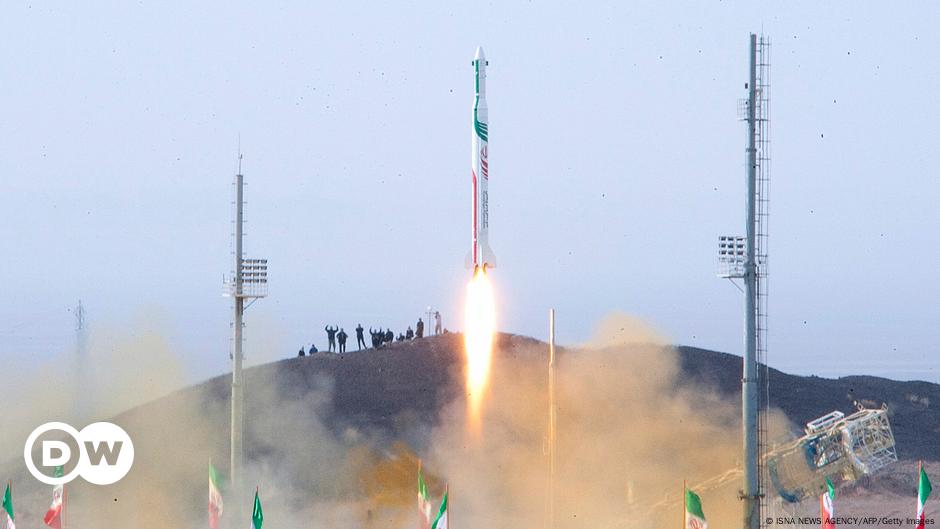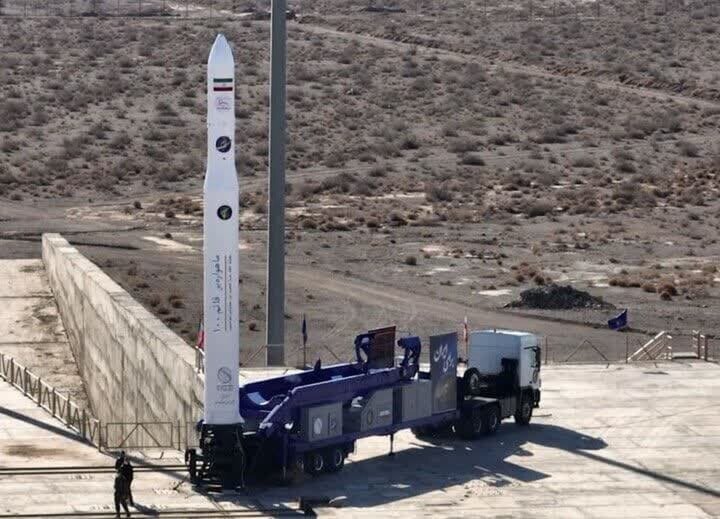Iran launched the Chamran-1 satellite into orbit on September 14, 2024 using the Qaem-100 rocket, its second successful launch using this vehicle. The Chamran-1 weighs 60 kilograms and was placed into a 550-kilometer orbit. Its mission is to test hardware and software systems related to orbital maneuver technology.

Also Read: Asteroid 2024 PT5: Earth to Capture a New Mini-Moon for 2 Months
The Chamran-1 satellite was launched on September 14, 2024 using the Qaem-100 rocket, which was developed by Iran’s paramilitary force, the Islamic Revolutionary Guard Corps. This is the second known use of the Qaem-100 for satellite launches following an earlier mission in January.
The 60-kilogram satellite entered a 550-kilometer orbit. According to Iranian state media, the satellite’s purpose is to test software and hardware for orbital maneuver technology, allowing future Iranian satellites to make adjustments to their positioning once in orbit.
The satellite will also explore cold gas propulsion systems and enhanced navigation technologies.
Chamran-1 was developed with the cooperation of Iran Electronics Industries, the Aerospace Research Institute and private technology companies within Iran.
The US and its allies are concerned that the long-range rocket technology used to place satellites into orbit could be repurposed to develop long-range ballistic missiles including ICBMs.
The solid-fuel Qaem-100 rocket is troubling to Western observers, as solid-fuel rockets can be stored for longer periods and launched more quickly than liquid-fueled rockets, which are more commonly associated with early-stage space programs.
While Iran insists that its space program is purely civilian and defensive in nature, the technology involved has clear military applications.
US military and intelligence agencies have expressed fears that Tehran’s advancements in space technology could eventually be used to develop missiles capable of carrying nuclear warheads over long distances.
The US and the International Atomic Energy Agency have suspected that Iran pursued a military nuclear program until 2003. Although Tehran maintains that it has abandoned any such ambitions, the overlap between space technology and missile technology keeps the issue alive in international discourse.
The West remains concerned about Iran’s aerospace activities. Although Iran claims its satellite launches are civilian in nature, Western officials fear that the technology used for these launches could also be applied to develop ballistic missiles capable of carrying nuclear warheads.
The solid-fuel Qaem-100 rocket used in the launch shares technological similarities with ballistic missile systems. According to the US intelligence community, satellite launch vehicles like the Qaem-100 could shorten the timeline for Iran to develop intercontinental ballistic missile capabilities.
Independent scientists later confirmed that the satellite had indeed reached orbit. The launch footage showed the rocket lifting off from a mobile launcher with analysis indicating that the launch occurred near the city of Shahroud.
Also Read: NASA’s Hubble and Chandra Discover Supermassive Black Holes Duo
The US State Department reiterated its concerns regarding Iran’s space program. They also stated that Iran’s actions violate a UN Security Council resolution, which calls on the nation to refrain from engaging in any activity involving ballistic missiles capable of delivering nuclear weapons.
While some UN sanctions related to Iran’s missile program expired in October 2023, the US continues to collaborate with its allies and partners to counter Iran’s ballistic missile advancement.
Iranian leaders including General Hossein Salami of the IRGC, have repeatedly stated that their space program is for peaceful purposes. Tehran addresses that its satellite program is designed to serve civilian needs such as improving communications and monitoring the environment.
In January 2024, Iran launched the Sorayya satellite into a 750-kilometer orbit, its highest satellite placement to date.
The launch of Chamran-1 also coincides with a political moment in Iran. It is the first satellite launch under the leadership of new Iranian President Masoud Pezeshkian, who took office following the death of former President Ebrahim Raisi in a helicopter crash earlier in the year.
Although Iran continues to deny any intentions of developing nuclear weapons, both the International Atomic Energy Agency and US intelligence agencies have concerns about Iran’s enrichment activities.
According to IAEA Director-General Rafael Grossi, Iran now possesses enough enriched uranium to create multiple nuclear warheads if it chooses to proceed down that path.
Also Read: Discovery of Hidden Edge State Could Lead to Practically Infinite Energy





















